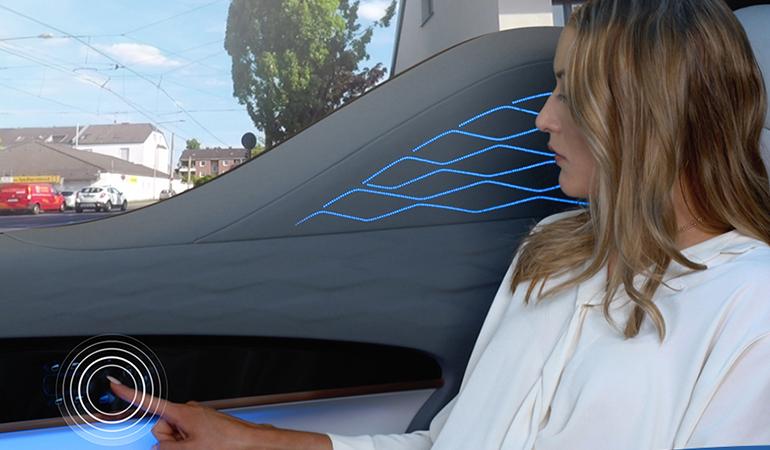From Smart Phones to Smart Surfaces
Why should using your car’s connected features be any less advanced than using your mobile?

Most people probably can’t remember the last time they used a phone with a key pad – or any buttons at all for that matter. That’s because leading tech companies pushed the mobile phone industry to realize early on the importance of touch screens and great Human Machine Interface (HMI) design. In comparison, some of our cars look like antiques. Bulky buttons and knobs take up valuable storage space and diminish the overall aesthetic drivers and passengers should be able to enjoy.
As advancements in autonomous driving allow drivers to let go of the wheel, the overall automotive and, especially, the interior experience will have to evolve. Consumers will demand comfortable, convenient and functional interiors that make time spent in their car feel no different than time spent in the office or at home. In order to create this new living space, automakers will not only need to craft a relaxed and contemporary in-car atmosphere, but will also need to reduce redundant buttons and switches to make room for more practical and user-friendly technologies, in line with the user experiences of other tech-products, like tablets and smartphones. With smart surfaces, our interiors can become more user-friendly and functional – all while improving the overall cabin ambience.
Using our mobile devices has become second nature, so it is only natural that these experiences extend to our vehicles. Smart surfaces allow vehicle manufacturers to offer the most intuitive experience on a sleek and modern screen – without superfluous and bulky gadgets. Different HMI can be integrated based on the specific needs of the users or the purpose of the vehicle. Unused functions can be dimmed or disappear, only to be reactivated by proximity, gesture or voice control. The instrument panel itself can become a screen to watch movies, select music or adjust lighting and climate controls. And since every surface can serve a purpose, there is more space for storage, seating or other conveniences like tables, cup holders or trays.
The rise of shared mobility will only compound the significance of smart surfaces. Even when renting, sharing or hailing a ride, drivers want to have as comfortable of an experience as they would in their own car. This means that displays and HMIs must be intuitive. With smart surfaces, individual vehicles in shared mobility fleets can be completely customized with minimal effort so that each unique user can have the experience they already know and prefer, saving the time and energy usually spent adjusting settings and figuring out new controls.
As with our mobile phones, technology in the automotive industry is progressing rapidly, becoming more and more intelligent. While these new advancements have made our lives more convenient and comfortable, they are still rather divided along industry lines. With smart surfaces, automakers can bring the two together to make the in-car experience more seamless and functional than ever before. The evolution is taking place on two fronts: While vehicles slowly become another mobile device that offers users new experiences, vehicle interiors will transform into a customizable, second living space – both functional and emotional.
By Han Hendriks, CTO at Yanfeng Automotive Interiors. Originally published on LinkedIn.


 LinkedIn
LinkedIn
 Instagram
Instagram
 YouTube
YouTube